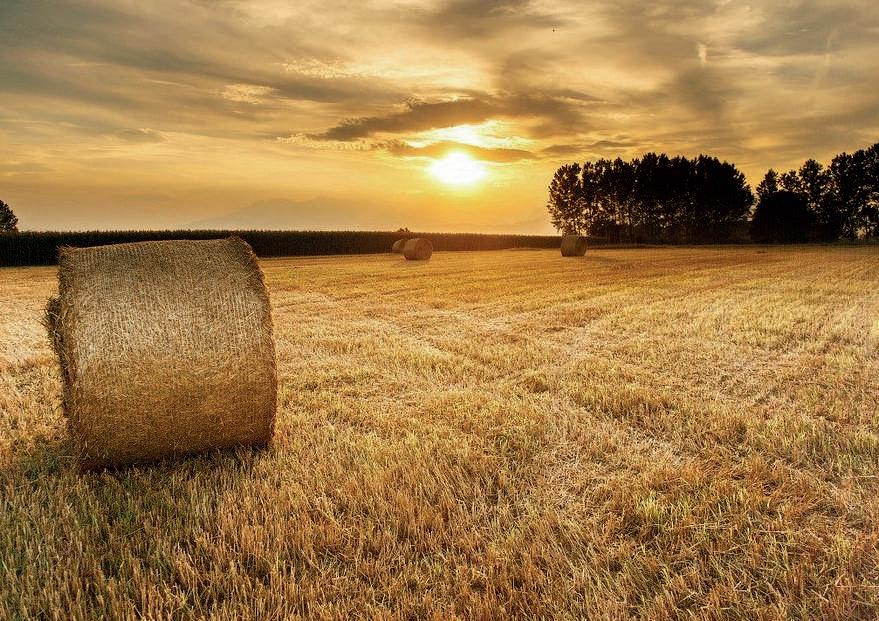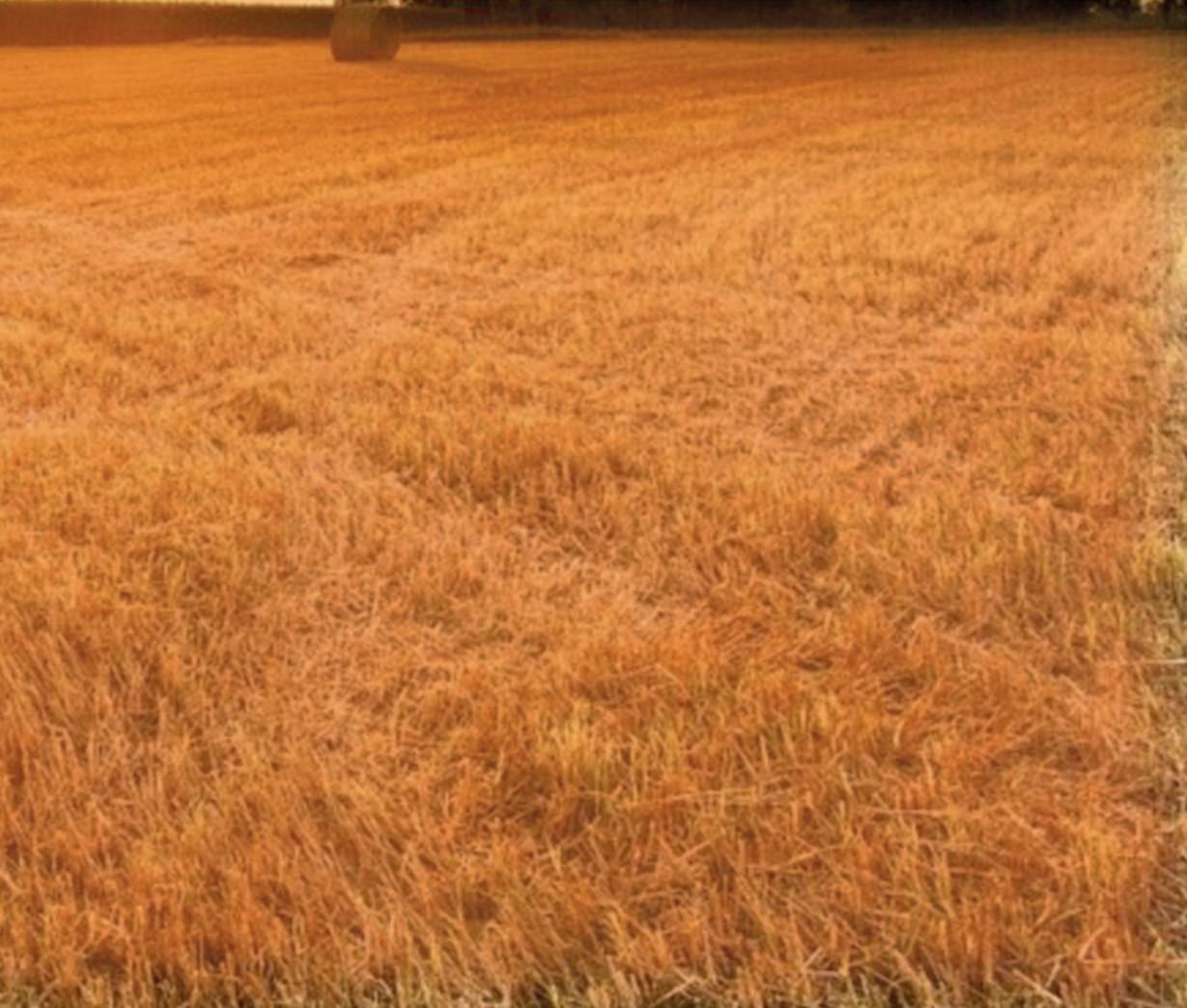
6 minute read
Farm life
Make Hay While the Sun Shines
YOU CAN ALWAYS TELL IT’S SUMMER BY THE PICTURESQUE SIGHT OF BALES NEATLY STACKED UP IN THE FIELDS AROUND US, BUT WHAT EXACTLY IS THE DIFFERENCE BETWEEN HAY AND HAYLAGE?
Advertisement
Put simply, the difference between haylage and hay is the removal of moisture. In the last few weeks, you will have seen what my children used to call large snail shells lying around in fields. I have even seen pink ones here! (A few years ago some farmers in the UK were supporting charities by paying more for the wrapping, in lots of different colours, perhaps taking some of the guilt away for having to use plastic.) But hay and haylage making have been in full swing with farmers working flat out, between the on and off rain we have had of late. So why do we have hay and haylage, and how to the two differ?

Hay is cut when the grass is mature and the grass needs to be sufficiently dry before bailing. Typically hay will be 85% or above dry matter, which relies on good weather conditions to achieve. Hence the hope of no rain and why you will see farmers turning the grass at regular intervals. This will reduce the moisture level to preserve it and avoid it going mouldy whilst it is being stored. If the bales have a higher moisture level this can allow the metabolic activity to continue, resulting in heat and the possibility of the bales bursting into flames, instantaneous combustion! Only a few years ago, I was told of a farm that lost its barn due to this happening. The resulting fire brought down the whole building. Moisture levels should be around ten to fifteen per cent and meadow grass is commonly preferred for haymaking. It's then laid in lines to bale with twine. If you have ever stood and watched a baling machine it is really quite mesmerizing as it compacts the grass into tight bales. This is usually done between May and August each year. Haylage, however, is cut and allowed to semi-wilt and not dry completely. Then it is wrapped, and this is usually done a few
Make Hay While the
By Karen Luff
allows bacterial species such as lactobacilli provide a sufficient With its lower energy value, enough can The main difference is the leaf structure in its preservation, the drying process in hay fractures the leaf and this can create dust as well as the loss of nutritional value, by steaming the hay with The main thing to remember is that with all livestock any change in diet should be introduced slowly over a period of time, mixing old and new. Karen with her husband John followed their dream and moved to Le Chataignier, a 400 year old house in the beautiful Mayenne region of France, with their five year old son. they have established a smallholding on the site.
weeks before the grass is cut for hay. It is from minerals, vitamins, protein, and normally wrapped within a day or two of water-soluble carbohydrates in the grass. being cut. The moisture level is much higher at forty to fifty per cent. This is when it will be baled with multi-layer plastic wrapping, which stops the oxygen getting in. The plastic wrap on the bale provides the anaerobic environment So, haylage is nutritionally higher in value than hay, and provides higher levels of energy, fibre, and protein, as the grass is less damaged in the process. However people can be confused about how much to feed as the moisture content is higher in necessary to allow the preservation of the haylage, you actually need to feed more by forage through fermentation. It also weight than the dry matter of hay. which is present in the crop to utilise and Any differences between hay and haylage make carbohydrates in the soluble water are determined by the grass type, when it's and produce lactic acid. The production of harvested, and the age for its this is important as this causes the pH nutritional value. level to drop between 4.8 and 5.8. This You will also find farmers growing drop in pH stops unwanted organisms different grasses to produce different commonly known as mould livestock feed. being produced. Hay can be a larger source of respirable But are these the only particles compared to differences between The main thing to haylage. There can be hay and haylage? How do these differences affect the nutritional remember is that with all livestock any change in diet extremely small particles that we can't see which can include mould value? Can they have should be introduced slowly spores, and bacteria. different influences on over a period of time, This can cause livestock performance, health, and well-being? mixing old and new respiratory problems. People do overcome this Good quality hay will a hay steamer. amount of forage for energy. In this So when can you start to feed using this respect, it is also good for feeding ‘ad-lib’. year’s crop? Be it hay, or haylage? be fed to provide livestock with sufficient forage, without concern about unwanted weight gain associated with feeding haylage, when feeding to horses. You can start straight away if necessary with hay. It will be higher in nutrition value now and over time this will reduce. Haylage however is another matter, and it will need about 6 weeks and longer, Hay is also a lot cheaper than haylage and giving it time to ferment and be if well stored will last a considerable time. properly preserved.


Over 14 years later It's not a good idea to rely just on feeding hay as it loses vitamins, so supplementary feeding is always good and gives a more balanced diet. Grass used for haylage tends to be younger and is more digestible. Giving higher levels of digestible fibre, energy and protein. Livestock will often eat more haylage due to its sweet smell. So it can be quite useful for those fussy eaters. Although haylage is more expensive, it can be better value, as less concentrated food needs to be fed due to the higher energy level. Correctly made haylage contains very few if any, mould spores, and because of its higher moisture content, any that are present do not become airborne and, therefore, do not cause problems. Once opened however haylage will start to deteriorate quickly and needs to be used within a few days. This makes it not always practical or financially viable for owners with only a few livestock. It is often used with older animals to keep weight gain. Ensuring sufficient forage is so important in equines because this is what provides the horse with energy for winter warmth, and maintains a healthy digestive tract to prevent problems such as stomach ulcers. So there we have it. The differences between hay and haylage are considerable, and each has its own benefits. Both feedstuffs have their individual advantages and disadvantages and these factors must be taken into consideration, alongside each individual's needs and requirements. One thing I can tell you is a barn full of a full winter's store is a good feeling!









